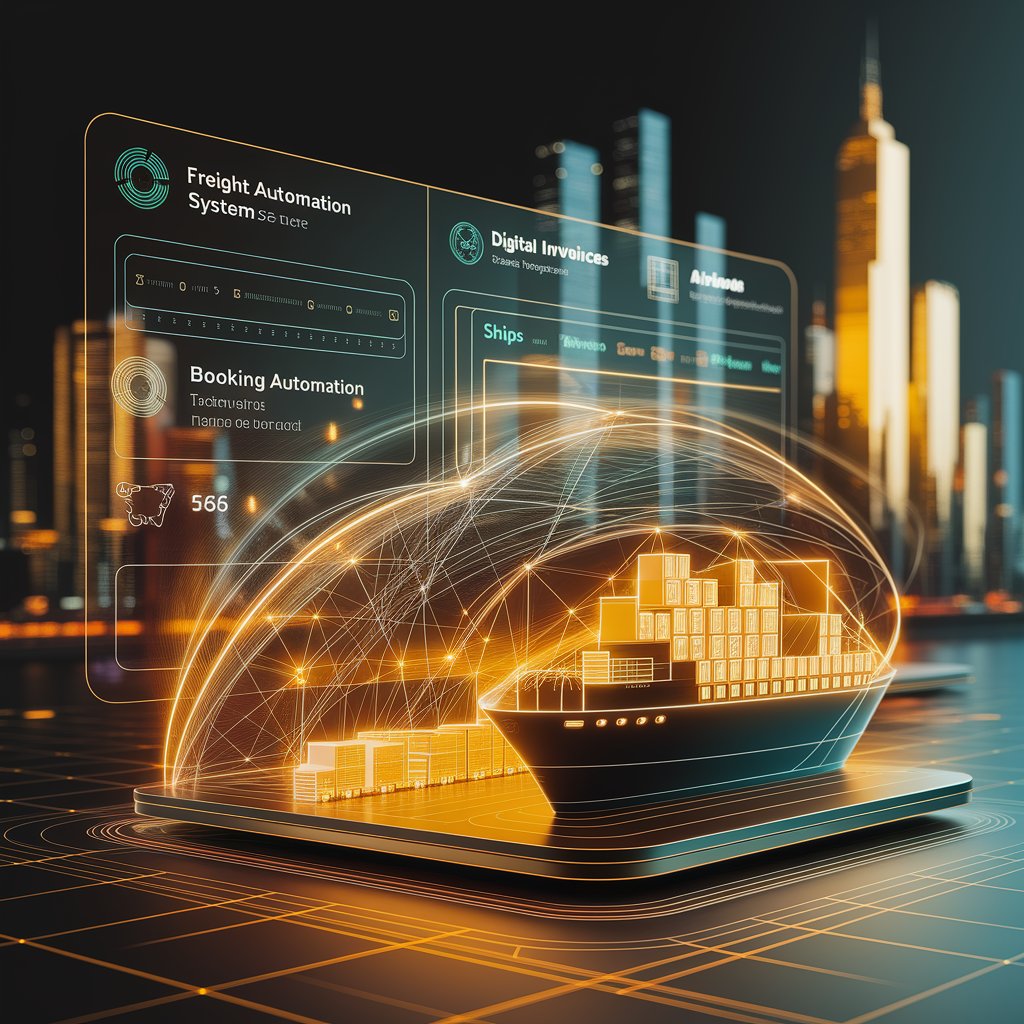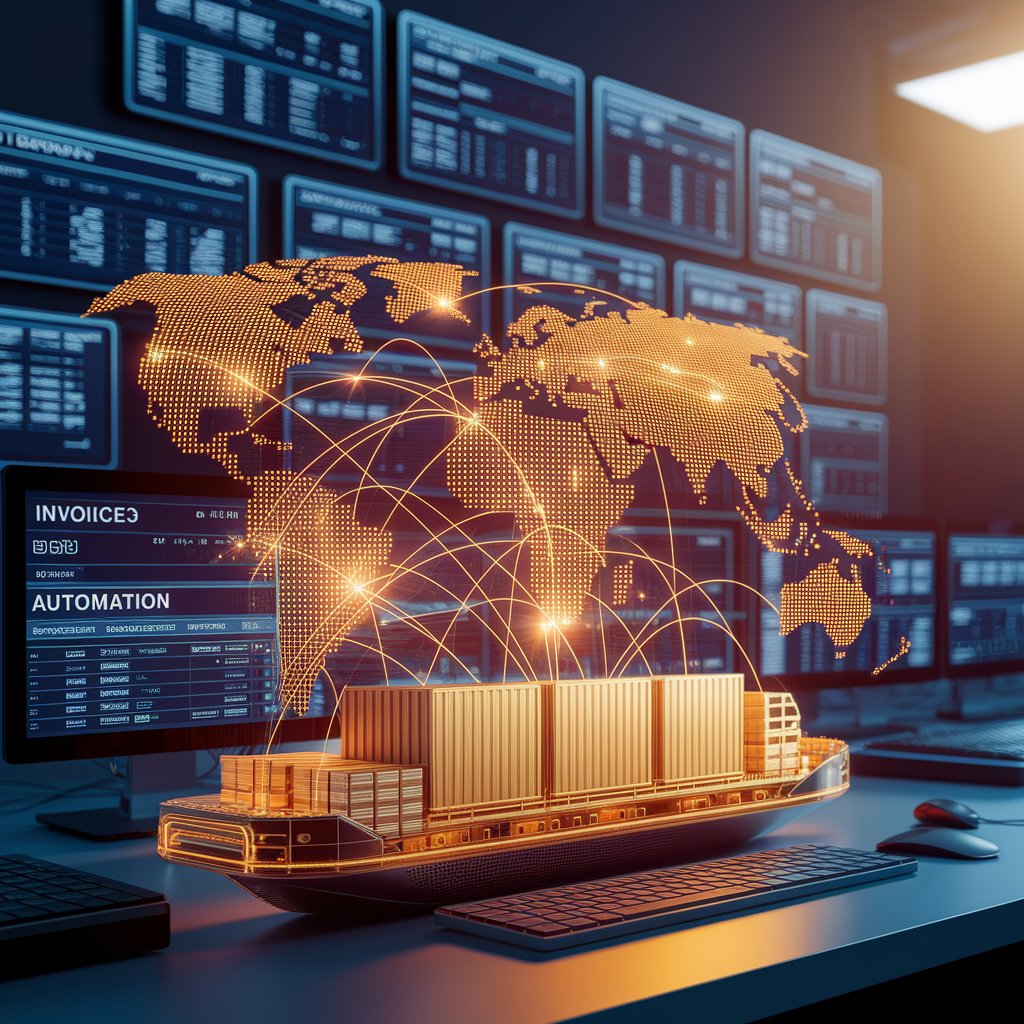Freight Automation Systems: Redefining Efficiency in Global Logistics

Introduction
This is where freight automation systems make a difference. By digitizing and automating processes such as booking, invoicing, tracking, and compliance, logistics companies can cut costs, improve accuracy, and deliver faster, more reliable services.
What Are Freight Automation Systems?
Freight automation systems are digital platforms that use AI, machine learning, and cloud-based technologies to automate freight operations. These systems connect shippers, carriers, freight forwarders, and customs authorities in one ecosystem, eliminating manual workflows and enabling real-time visibility and decision-making.
Key processes automated include:
- Booking and rate management
- Documentation (B/L, invoices, customs forms)
- Shipment tracking and updates
- Freight audit and settlement
- Compliance verification

Key Features
- Automated Booking – Instantly match shippers with carriers and confirm space.
- Dynamic Pricing Engines – Adjust rates based on demand, fuel costs, and capacity.
- Digital Documentation – Replace paper with electronic bills of lading and invoices.
- Real-Time Tracking – Monitor cargo across multiple transport modes.
- Compliance Automation – Ensure global trade rules and regulations are met.
- Freight Audit & Settlement – Validate invoices and automate payments.
Benefits 📈
- Operational Efficiency – Eliminate manual work and reduce errors.
- Cost Reduction – Optimize carrier selection and prevent billing mistakes.
- Speed – Faster booking, clearance, and settlement cycles.
- Transparency – End-to-end visibility across shipments and partners.
- Scalability – Handle growing volumes without increasing staff.
- Customer Satisfaction – Reliable, real-time updates build trust.

Real-World Applications
- Freight Forwarders – Automate bookings, documentation, and settlement to serve more clients.
- Carriers – Use automation to maximize fleet utilization and reduce empty miles.
- E-commerce Logistics – Manage large shipping volumes with automated quoting and tracking.
- 3PL Providers – Integrate automation into value-added services for customers.
- International Shippers – Ensure faster customs clearance with automated compliance checks.
Challenges in Implementing Freight Automation Systems
- Integration with Legacy Systems – Older ERP or TMS platforms may resist automation.
- High Upfront Costs – Investment in automation tools can be significant.
- Data Quality Issues – Inaccurate or incomplete data undermines automation.
- Change Resistance – Staff may hesitate to transition from manual processes.
- Cybersecurity Risks – Digital platforms must protect sensitive trade data.

Best Practices for Adopting Freight Automation Systems
- Start with High-Impact Areas – Automate bookings, invoicing, or tracking first.
- Prioritize Data Cleanliness – Ensure contracts and shipment data are standardized.
- Integrate Across Platforms – Connect automation with ERP, TMS, and WMS.
- Focus on User Adoption – Train staff and partners for smooth transitions.
- Leverage AI & Analytics – Use predictive tools for pricing and demand planning.
- Measure ROI – Track efficiency gains, cost savings, and customer satisfaction.
Future of Freight Automation Systems 🚀
The next wave of freight automation systems will be powered by:
- AI-Powered Freight Marketplaces – Smarter carrier selection and instant capacity matching.
- Blockchain Integration – Secure and transparent digital documentation.
- Autonomous Logistics Platforms – Self-optimizing freight flows.
- IoT-Enabled Tracking – Real-time monitoring of cargo conditions.
- Sustainability Automation – Systems optimizing freight with lower carbon footprints.
Conclusion
Freight automation systems are revolutionizing how logistics companies operate. By automating bookings, documents, tracking, and payments, businesses can cut costs, improve efficiency, and deliver better customer experiences.
In today’s competitive environment, adopting freight automation systems isn’t just a technology upgrade—it’s the foundation of smarter, more resilient supply chains.
